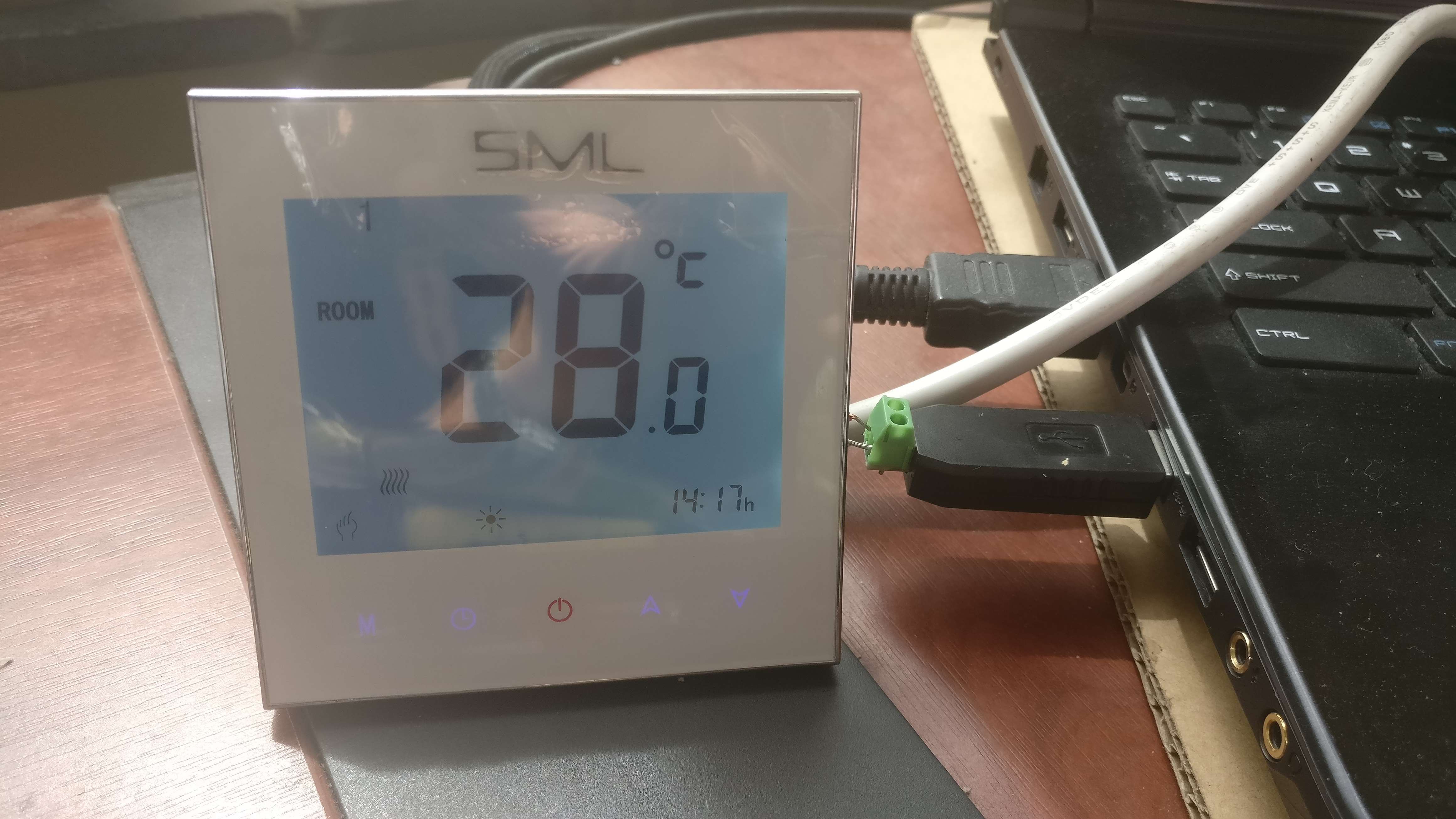It has been while since my last log. But this doesn't mean that there is no progress. I ordered some parts on aliexpress and I played with a room thermostat that has a modbus connection. This thermostat can measure the room temperature and can switch on the valves to heat the room. But this isn't why I want this thermostat. I just want it as a input device/terminal for user input. So the Loxone can read out the room temperature and see what temperature is desired by the user in that room. The Loxone will decide what action has to be taken with the given values. It's not really a high tech device though. It measures the temperature with an inaccurate NTC resistor. I also noticed that the time on the device is not very accurate. But the last thing isn't a problem, since the time will be regularly updated by the NTP time from the Loxone. The positive things about the device....it looks nice and does exactly what I wanted (being able to set and read values from the outside by connecting it to a Modbus master).
I also bought DMX RGBW LEDStrip PWM dimmers. I haven't tested the units yet (I don't have the RGBWW LEDstrip yet), but I also have found a cheap alternative. The PCA9685 from NXP. It's a 16 channel 12bit PWM device with I2C connection. I will not place this device on my board, but I will make the I2C bus available to expand this PCB with a PCA9685 device. It is really simple to make a RGBW dimmer (4ch PWM LED dimmer). Just connect the I2C to the PCA9685. Connect FETs to the LED outputs of the PCA9685 (with probably a FET driver eg PMD3001D) and you are ready to go. The FET will be able to switch the 12VDC on and off. The FET driver will prevent the FET from becoming too hot. It's the time between the on- and off- state when the FET heats up the most (relative high voltage and high current). The FET driver will shorten the switching time and will prevent excessive heat losses. You don't have to use a FET driver when you just switch 2 times a minute, but since it's a PWM signal, the switching frequency is high.
Below you see a picture of the thermostat. Yeah, I know, it was pretty hot that day....

Discussions
Become a Hackaday.io Member
Create an account to leave a comment. Already have an account? Log In.